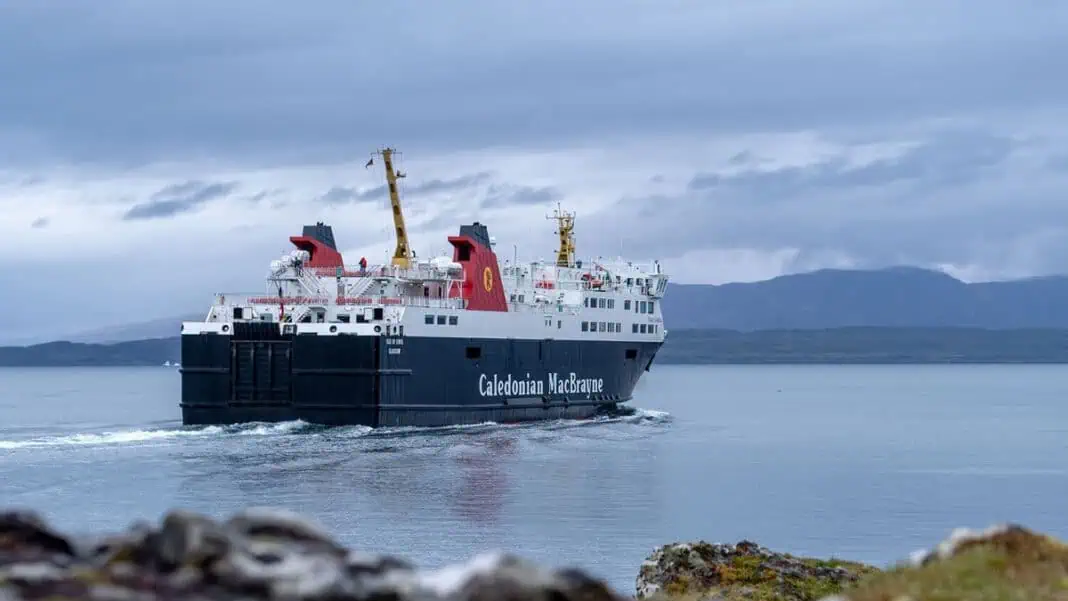Caledonian MacBrayne Ferries (CalMac) and Volvo Penta repowered ferries to boost the company’s performance and prepare a dozen ferries for future needs. The project required a variety of IMO III engines and marine gensets.
Unpredictable extremes characterize Scotland’s weather. From hazy mists to intense storms, conditions require tough marine equipment that is adaptable and reliable. Ferries are crucial in maintaining connectivity between Western Scottish island communities and mainland Scotland.
CalMac is one of the largest ferry operators in these waters, logging more than 150,000 operating hours each year. Volvo Penta worked with CalMac to repower 14 ferries to improve efficiency and performance, and to prepare for future emissions requirements.
“With vessels of various sizes, all with different travel requirements, the project necessitated working with Volvo Penta to come up with a unique repowering solution for each ferry,” said James McPaul, marine commercial applications engineer at Volvo Penta. “There was no one-size-fits-all solution.”
Volvo Penta’s marine commercial repower packages extend the lifetimes of vessels and grant them new reliability. Repowering commercial vessels brings improved acceleration, immediate response and enhanced maneuverability. They see better overall fuel economy and become compatible with alternative fuel sources and electronic management systems.
CalMac prioritized efficiency on the project. It chose to repower ferries with engines that could meet future emissions requirements, even for waters that are not yet subject to IMO III standards.
MV Loch Dunvegan, for example, is a 54-meter ferry that operates a five-minute route multiple times a day. It was repowered with two Volvo Penta D13MH IMO III with a 500 hp (386k W) rating. It is a variable speed, in-line 6-cylinder, 12.8-liter direct-injected marine diesel propulsion engine with twin-entry turbo and aftercooler.
The D13 MH IMO III utilizes a Selective Catalytic Reduction (SCR) unit optimized for marine use to improve efficiency beyond IMO III standards.
“CalMac wanted to repower this vessel with the highest levels of efficiency in mind. We have been very impressed with the D13 IMO III engines onboard the MV Loch Dunvegan. They are simple to maintain with remote servicing capabilities; they have accessible components and straightforward servicing procedures,” said Jamie McGuigan, motorman aboard the MV Loch Dunvegan, CalMac.
The repowering of some CalMac ferries called for new Volvo Penta marine gensets, which offer heavy-duty, fuel-efficient electrical power generation for emergency generator sets and onboard power.
Caledonian MacBrayne Ferries chose from the wide range of Volvo Penta marine gensets that utilize SCR to meet IMO Tier III emission regulations and EU Stage V Marine requirements. The Volvo Penta generators provide electrical power to the vessel for reliable operation and efficient performance.
The MV Isle of Mull is a 90-meter ferry that received four new Volvo Penta D13 HE KC (heat exchanger cooled) gensets. These 300 kW (50 Hz) models were selected to ensure the generators could match onboard power requirements. Two of the units act as the primary gensets and the other two provide redundancy.
Reliability on the horizon
Through the repowering project, CalMac’s vessels will run for many more years, realizing new potential along the way. The vessels are backed by new Volvo Penta warranties and supportfrom Volvo Penta’s Global Service Network. This gives the company and its customers renewed peace of mind as they navigate Scottish waterways to work and live.












